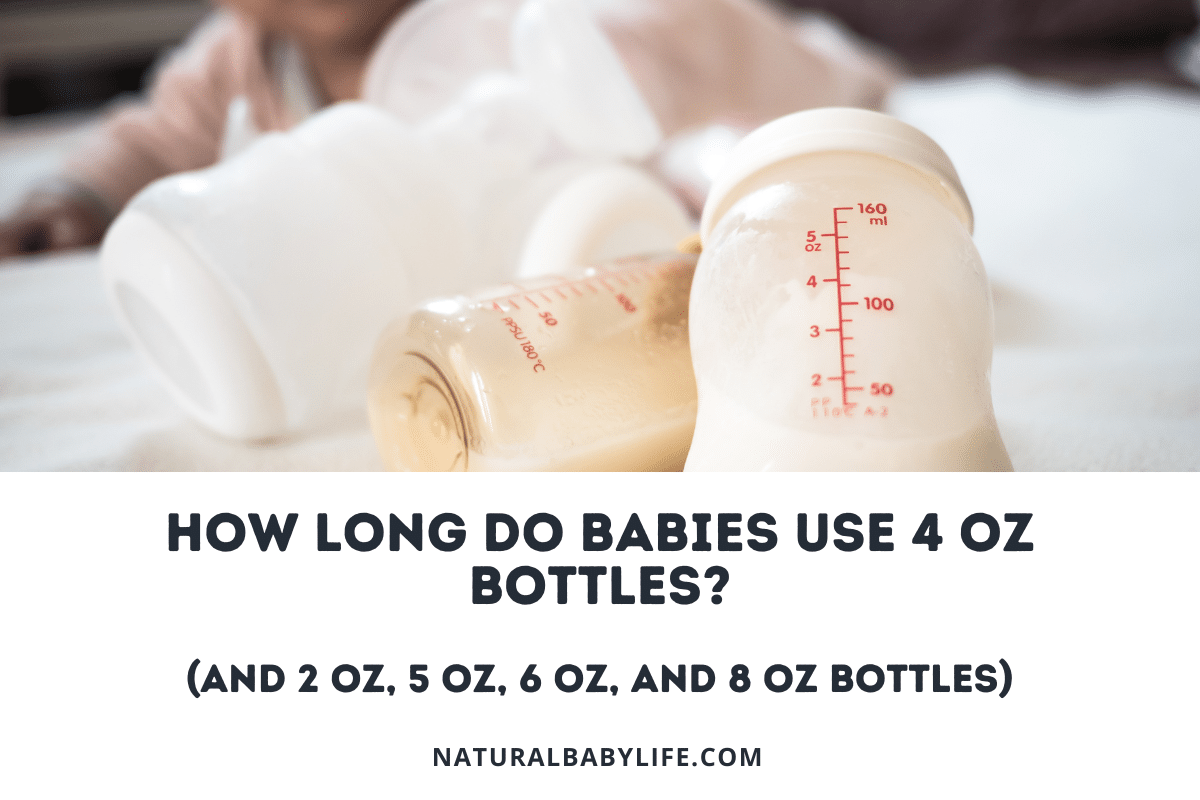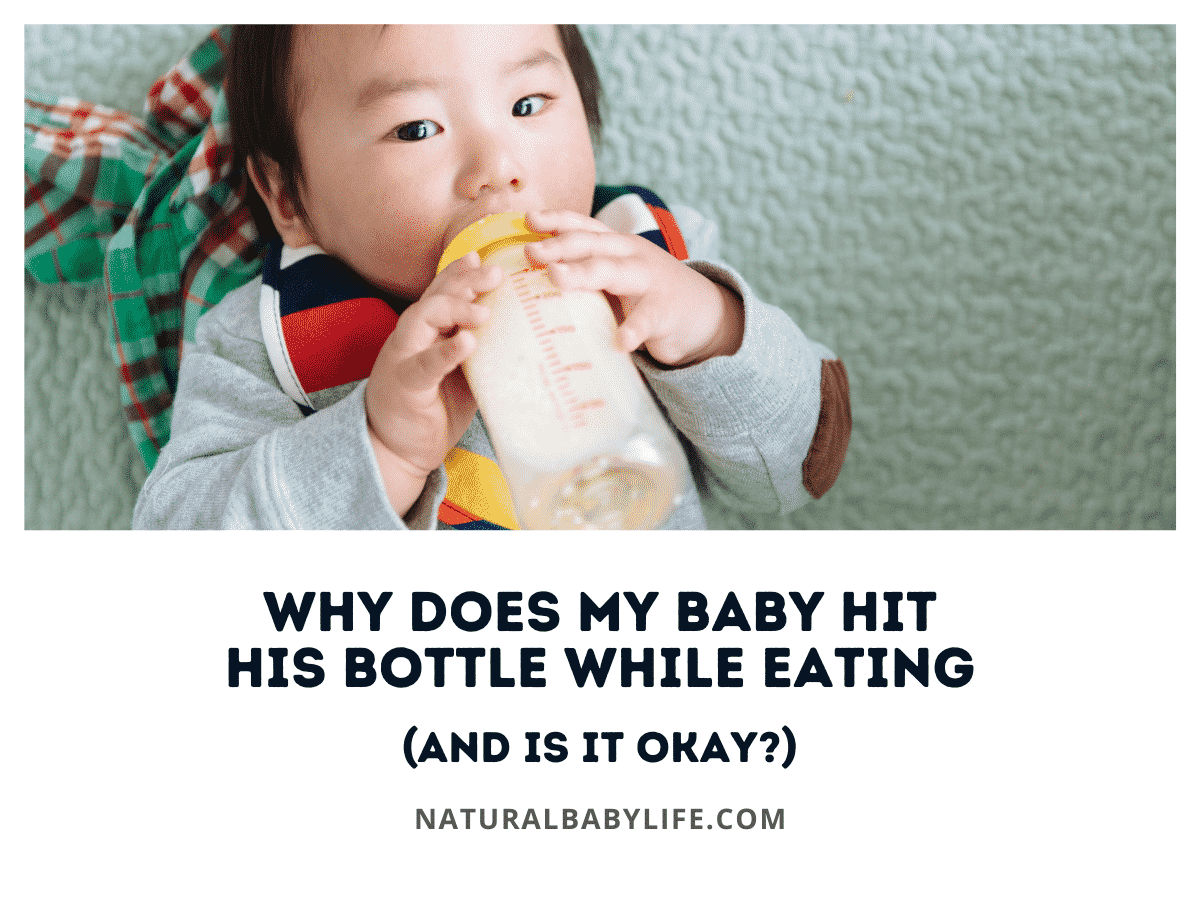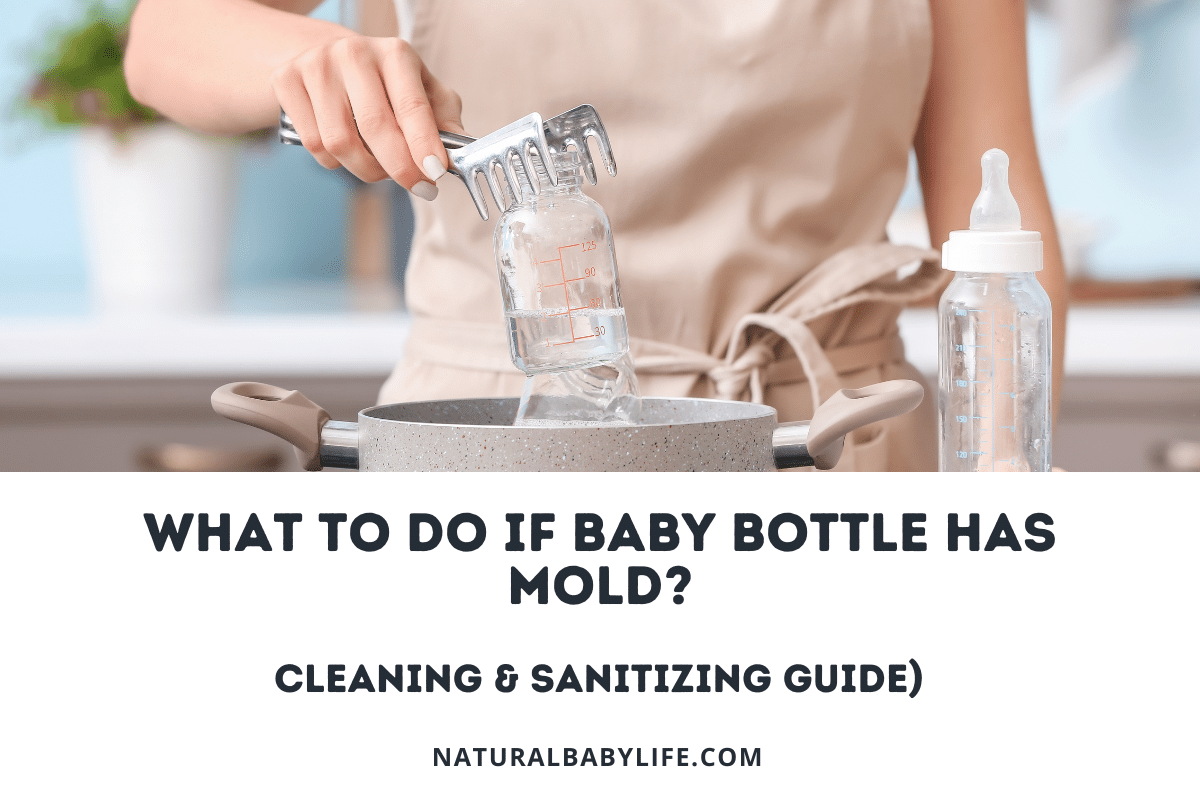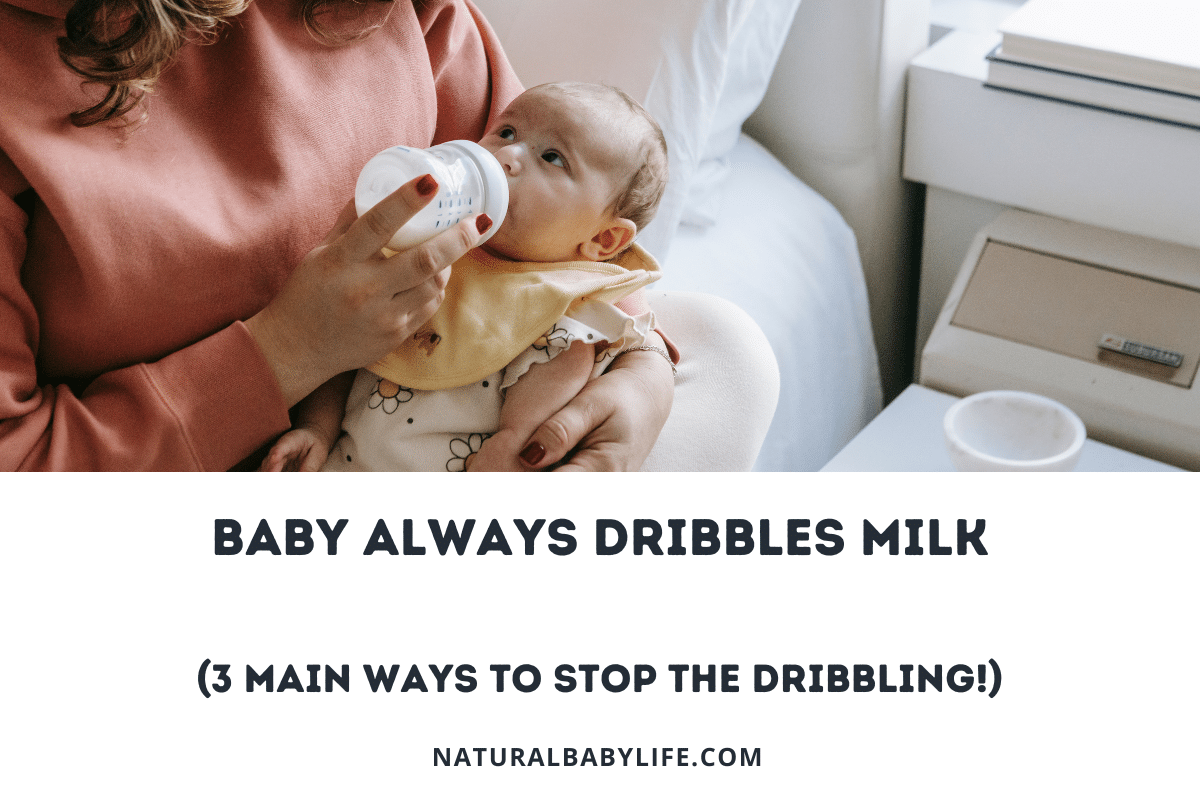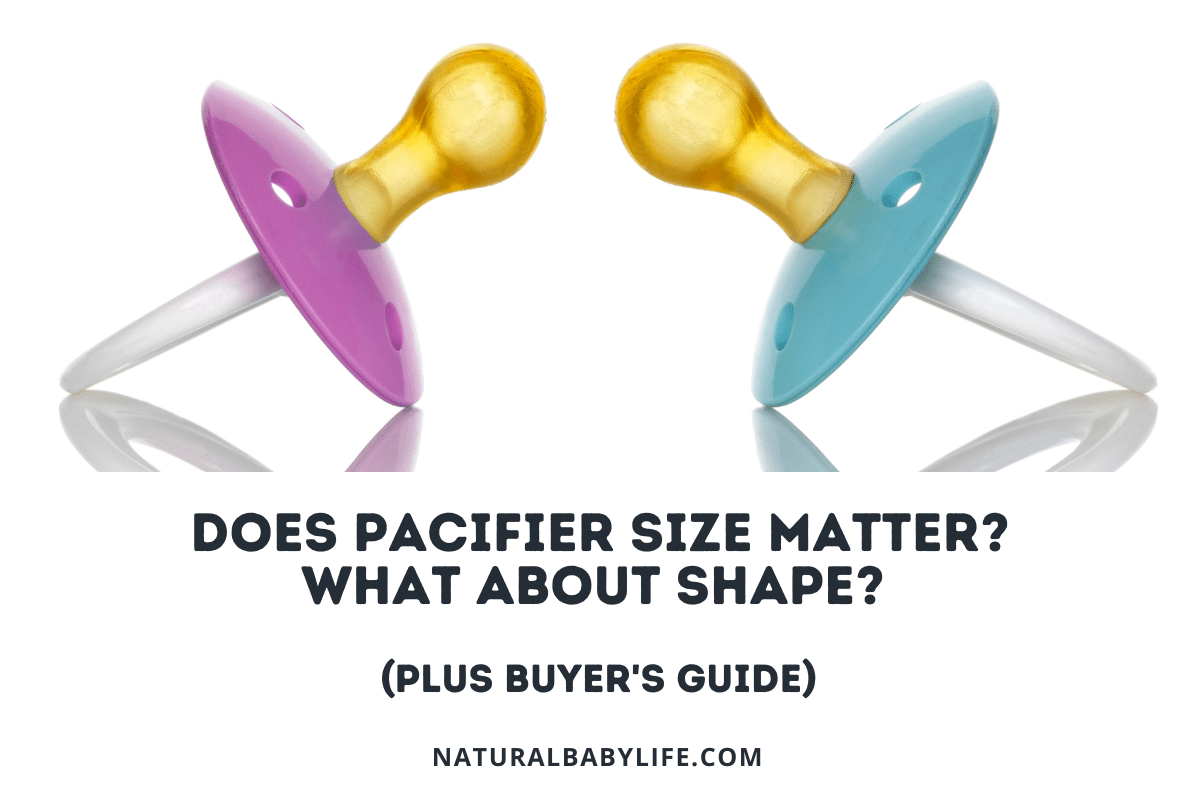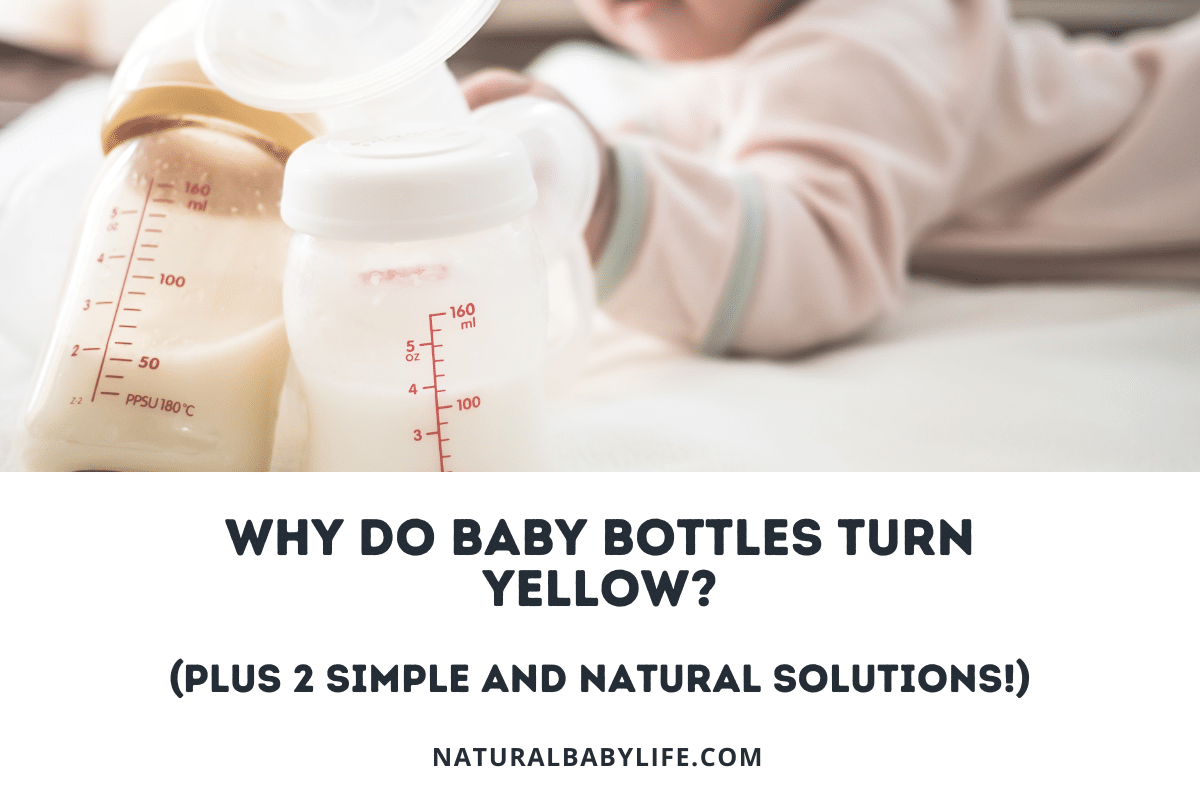When you first started buying bottles for your new baby, you may have been surprised by the variety of options available. You’ll want to purchase the correct bottles for your little one as they grow. But, how long do babies use 4 oz bottles? Or 2 oz, 6 oz, or 8 oz bottles for that matter?
On average, your newborn will use the 2-oz bottle for 4 weeks. After that, they’ll use a 4-oz (4 weeks) and 5-oz (8 weeks) bottle. They’ll use the 8-oz bottle from about 6 months until they stop bottle feeding.
Read on for more helpful information on how long your baby will use 2-, 4-, 5-, 6-, and 8-ounce baby bottles. Plus, what to expect as far as the number of feedings, and whether you can skip any of the bottle sizes.
Table of Contents
How much formula do babies eat by age?
With a newborn, it can seem like all your baby does is sleep, eat, poop, and repeat so it may seem to you like they’re eating loads, but you have to remember that their tummies are tiny and can only hold a couple of ounces at a time.
As your baby grows and develops, she will be able to eat more at a time, reducing the number of times she needs to be fed throughout the day and increasing the amount she’s able to take in.
When bottle-feeding, it is important to match your baby’s bottle to how much milk or formula she should be taking in per feeding. A bottle that is too small can lead to your baby not getting enough to eat; a bottle that is too large can lead to waste.
The amount you can expect your baby to consume per feeding can vary based on a few factors including their age, the time of day, whether they’re experiencing a growth spurt, and if they aren’t feeling well.
We’ve provided a table listing the average amount of formula you can expect your baby to consume based on their age.
You’ll also find the approximate number of feedings you can expect for your baby in a 24-hour period and the recommended bottle size based on their age.
Recommended Bottle Size Based on Age and Average Feeding
Age Number of Feedings per Day (24 hours) Average Feeding Size Recommended Bottle Size
Birth-4 weeks 8-12
(or on demand)1-2 oz 2-oz
1-2 months 8-12 2-3 oz 4-oz
2-4 months 6-12 5 oz 5-oz
4-6 months 6-8 6 oz 6-oz
6+ months 6-8 7-8 oz 8 oz
If you have concerns about your baby’s bottle needs, their appetite, or the amount of formula they are consuming, please contact your baby’s pediatrician or healthcare provider.
What size baby bottles do you need?
Some pediatricians recommend purchasing specific bottle sizes for each feeding stage if you tend to overfill bottles. There are health concerns regarding obesity about serving your baby a bottle with too much milk as compared to recommended for their size and age.
There have been troubling differences observed comparing the bottle size served at two months old and the weight and length of babies at six months old.
However, many parents have succeeded in skipping the five-ounce bottle recommended for babies two to four months old and starting their babies on a six-ounce bottle instead.
This saves money and time purchasing bottles and keeps their babies in the same-sized bottle for sixteen weeks.
If you choose to do this, you should prepare the amounts required for the five-ounce bottle, not simply skip directly to a six-ounce feeding.
Of course, other pediatricians adamantly encourage feeding infants as much as they desire, especially if your baby is on the smaller side.
If you are unsure how much to feed your baby please consult your family’s pediatrician or healthcare provider.
How many baby bottles should you get of each size?
There is no correct number of baby bottles you should purchase in each size or a firm rule that you have to buy bottles in each size.
You might choose to skip some sizes depending on what works for your baby, their age, and the amount of formula they are consuming per feeding.
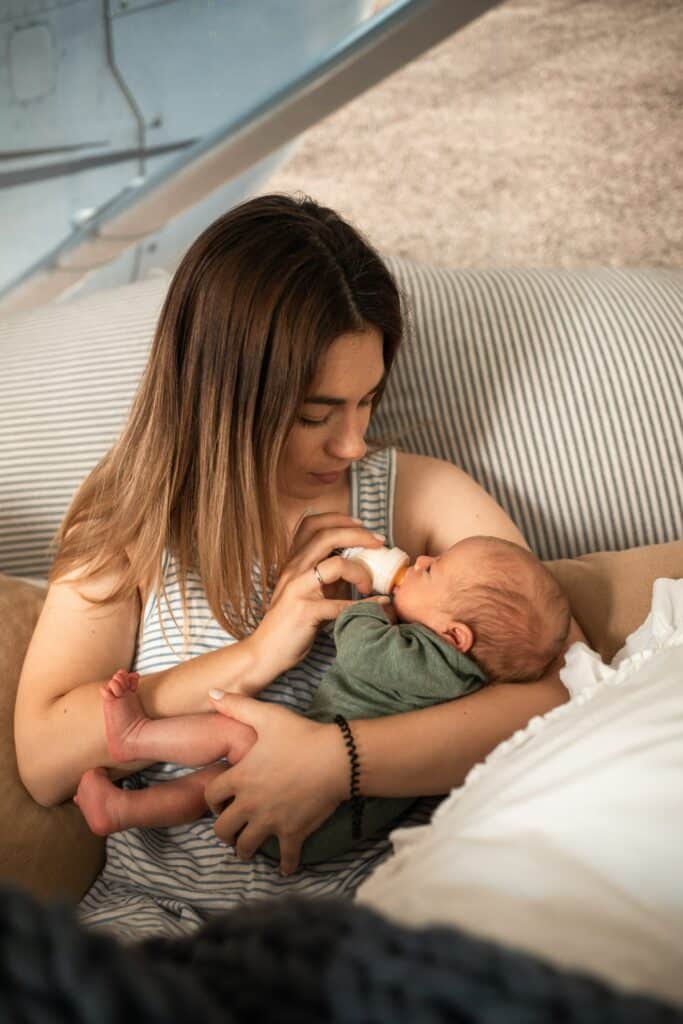
If you plan on traveling with your baby or they attend daycare, plan on buying more bottles to have on hand.
A good suggestion is to buy eight two-ounce baby bottles if you are formula-feeding your newborn and three to four bottles if you are supplementing with breastmilk.
When determining how many bottles of each size you need, consider:
- Cleaning time – Will you be cleaning and sanitizing your baby’s bottles shortly after each feeding? Or will they be cleaned several hours later?
- Preparation – Are you planning on traveling with your baby? If you need to prepare bottles for your baby in advance, you’ll need to have a few spare bottles.
- Daycare – Will your baby be attending daycare? If so, you’ll need to have extra bottles to pack for your baby’s caregiver.
- Expense – How much are you looking to spend on baby bottles? Depending on the type of baby bottles you are wanting to purchase, each bottle can cost anywhere from $1 to $35.
How long do babies use 2 oz bottles?
Newborn babies only need 1-2 ounces of milk or formula per feeding.
Newborns use 2-ounce bottles from birth until they are about a month old. Premature or small-for-age babies will use these for longer.
Some parents will opt to skip the two-ounce size bottle and start their newborns using four-ounce bottles immediately.
While babies feed frequently, the prepared formula is only good within two hours of preparation and one hour of feeding; even with 8-12 feedings throughout the day, leftovers will most likely need to be thrown away by the next time your child is hungry.
If you are going to use a larger bottle size, make sure that you are only preparing 1-2 ounces at a time.
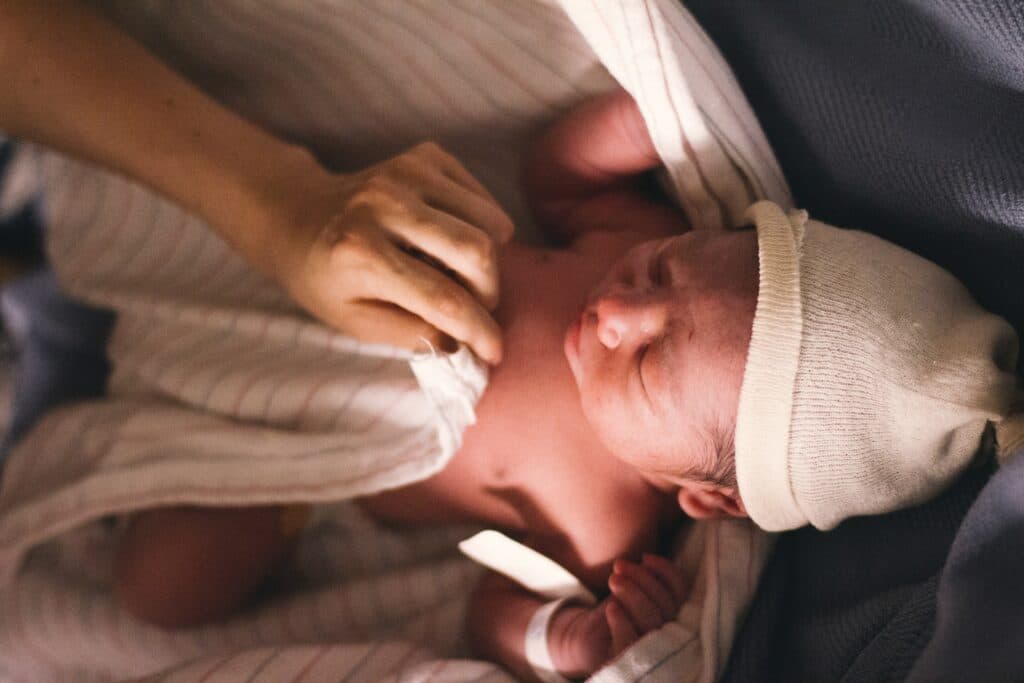
The 2-ounce bottles are nice to help you avoid waste, and they come with graduated marking in CCs to help you accurately track your baby’s intake.
These bottles from Dr. Brown’s come with a preemie nipple which can be very useful for babies having trouble learning to feed or who are very slow feeders.
How long do babies use 4 oz bottles?
Once your little one’s stomach starts to grow, they will continue feeding frequently (8-12 times per day), but they will need 2-3 ounces per feeding.
Your baby will use the 4-ounce bottle from about the time they’re 4 weeks old until they are several months old.
For some babies, two-ounce bottles may provide enough nourishment for a few additional weeks, but you should always feed your little one until they are sated, not until the bottle (especially a smaller one) is finished.
Four-ounce bottles get the most use in my household for their versatility and easy packing size. I tend to use glass bottles, so the smaller size is more comfortable for me and my baby to hold.
Sometimes this means a refill mid-feed, but it cuts down on the number of bottles I buy.
How long do babies use 5 oz bottles?
Around the time your baby is two months old, you’ll notice that 2-3 ounces aren’t nearly enough for your little one. At this stage, you’ll want to move up to the 5-ounce bottle (or skip straight to the 6-oz size).
Five-ounce bottles are recommended for babies aged eight to sixteen weeks old, or two to four months old. Babies will use five-ounce bottles for 8 weeks.
Rather than buying five-ounce bottles just 4 short weeks after buying 4-ounce bottles, many parents opt to skip using five-ounce bottles and begin their babies on six-ounce bottles when their babies are eight weeks, or two months old.
Skipping the five-ounce bottle means they are able to keep their babies on 6-ounce bottles for sixteen weeks.
How long do babies use 6 oz bottles?
Babies use six-ounce bottles for eight weeks. Six-ounce bottles are recommended for babies aged sixteen to thirty-six weeks, or four to six months old.
Many parents choose to forego the 5-oz bottle size altogether and skip to the 6-oz size. If you do this, make sure you’re paying attention to how much your little one is consuming so you can increase the amount of formula or milk being prepared for each feeding.
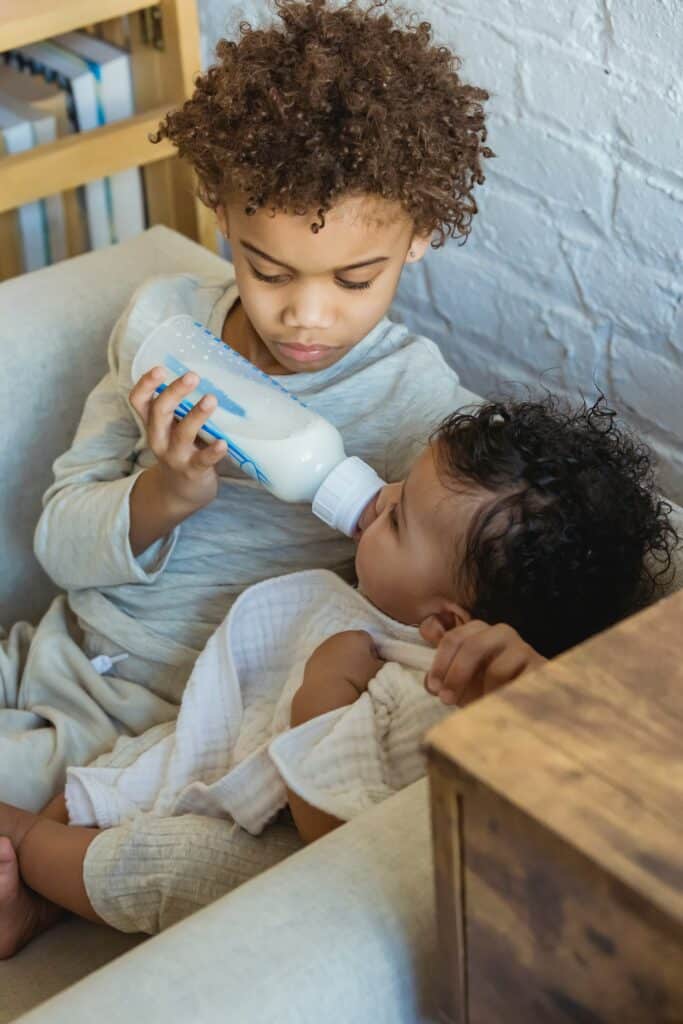
How long do babies use 8 oz bottles?
Eight-ounce bottles are recommended for babies aged six months and older and can be used for up to a year.
The American Academy of Pediatrics recommends that children be weaned off of bottles by the time they are eighteen months old.
Frequently Asked Questions (FAQs)
How many baby bottles do I need for newborn?
Newborns should have 1-2 ounces of breastmilk or formula every 2 to 3 hours, so you’ll need 8 to 12 bottles per day. You can wash bottles throughout the day to avoid buying that many.
How many baby bottles do I need if breastfeeding?
If breastfeeding, you might need fewer bottles than if formula feeding. However, you’ll need to provide bottles if your baby is in childcare or with the other parent.
At a minimum, it’s a good idea to have at least four bottles on hand for daycare or trips out and about.
Do I need 4 oz or 8 oz bottles?
It’s typically more convenient to have more bottles, but if you’re only buying one set, it should be 8-ounce bottles. As your baby gets older, they’ll eat more at each feeding.
Conclusion
It can be overwhelming when trying to plan your bottle inventory before your baby is born. Keep in mind that you’ll get more life out of the larger bottles because you can simply fill them with less milk.
However, the smaller bottles are easier to pack and lighter for both you and your baby to hold, so if cost isn’t an issue, having a stash of 4-ounce bottles is a great convenience.

